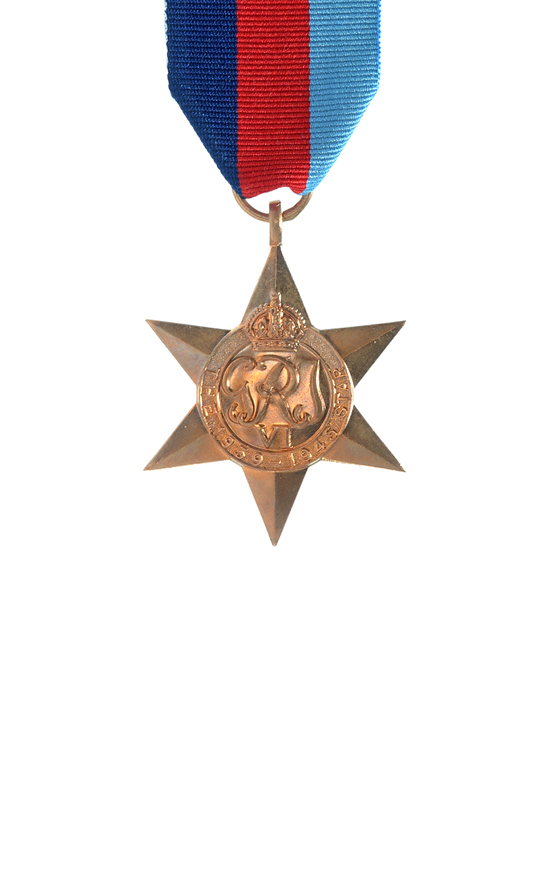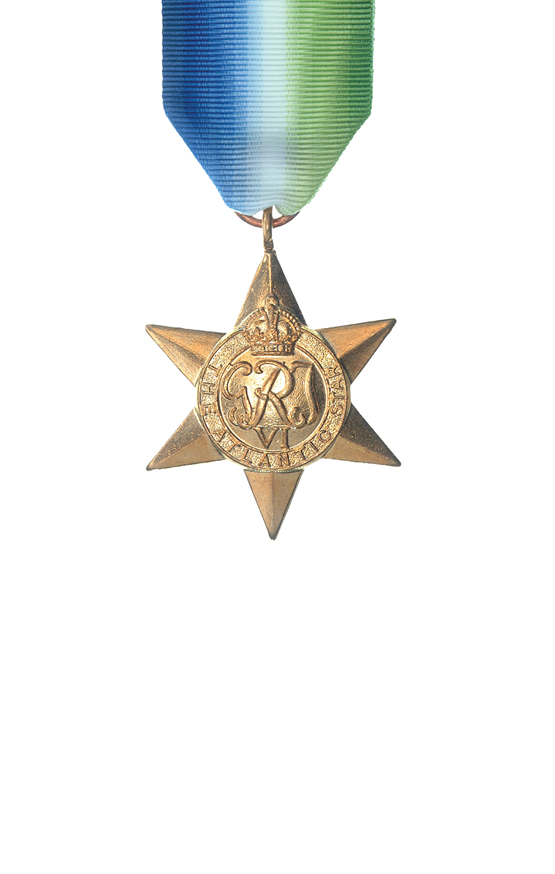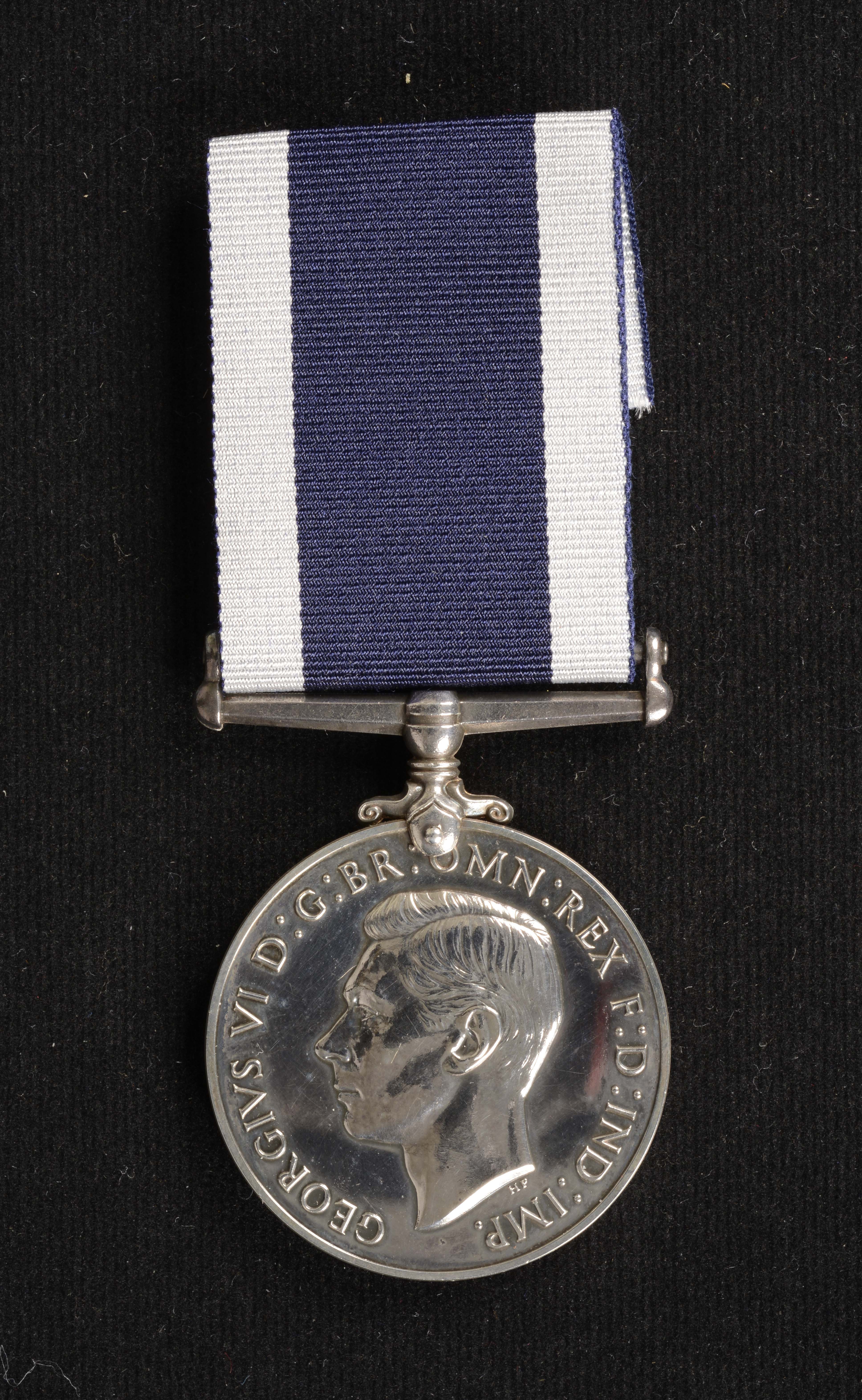

Display No. 5E
LISTER, Alec Edward
Alec Lister enlisted in the Stoker branch of the Royal Navy in November 1918 when he was eighteen years old. He completed his training at HMS Pembroke before joining the crew of the repair ship HMS Cyclops in April 1919. Lister reached the rank of Stoker 1st Class in September 1919. When Cyclops went into reserve for refit and conversion in early 1920, he was posted to the gunnery training ship HMS Erin. In August of 1922, Lister joined the crew of the light cruiser HMS Cambrian which served in the Atlantic Fleet. He remained with the ship for two years before returning to the shore establishment HMS Pembroke.
Over the following five years, Lister mainly served at HMS Pembroke but had short postings to HM ships Starfish, Wessex and Cambrian. He joined the crew of HMS Frobisher in September 1929 which served in the Atlantic Fleet. Lister returned to HMS Pembroke before being posted to the sloop ship HMS Veronica, serving in the New Zealand Division of the Royal Navy. Veronica toured New Zealand ports, undertook cruises to the Pacific Islands and exercised with cruisers. Lister spent three years in New Zealand before returning to the UK in 1934.
He came back to New Zealand in early 1935 on loan to the New Zealand Division of the Royal Navy. Lister tehn served two years in the cruiser HMS Dunedin. In February 1937, he was posted to the sloop ship HMS Wellington serving on the New Zealand Station. He remained with the ship until he reverted back to the Royal Navy at the end of 1939.
Lister’s spent most of his Second World War service in the destroyer HMS Walpole and serving at the shore establishment HMS Pembroke II. After almost twenty three years of service, Lister was invalided out of the Royal Navy in October 1941 with a heart condition which meant he could not continue to serve. He eventually immigrated to New Zealand.
Awarded medal(s)
Medal Description [Left to Right]:
The 1939-1945 Star

The 1939-45 Star is the first in a series of eight campaign stars instituted in 1945 to recognise service in World War Two. The ribbon has three equal vertical stripes of dark blue, red and light blue. The dark blue stripe symbolises the service of the Navy and the Merchant Navy, the red stripe symbolises the service of the Army, and the light blue stripe symbolises the service of the Air Force. The equal width bands represent the equal contributions of the three service arms towards victory. The ribbon was devised by King George VI. Two clasps could be awarded with this medal: ‘Battle of Britain’ and ‘Bomber Command’. Only aircrew would qualify for these clasps although a small number of Fleet Air Arm naval pilots flew for the air force and would be eligible for the ‘Battle of Britain’ clasp.
The Atlantic Star

The Atlantic Star was awarded for service during the Second World War. It was instituted to commemorate the Battle of the Atlantic the longest continuous military campaign in the Second World War running from 3 September, 1939 – 8 May, 1945. Six months naval service or four months air service in the Atlantic, United Kingdom (‘home’) waters or North Russian waters was normally required. The ribbon is watered silk coloured blue, white and green, symbolising service in the oceans. Two clasps could be awarded with this medal: ‘France and Germany’ and ‘Air Crew Europe’. Personnel issued the Atlantic Star who then qualified for either the France and Germany and the Air Crew Europe Stars were awarded a clasp in respect of the second only (as only one clasp could be worn on the star).
The War Medal 1939-1945

The War Medal 1939-45 was awarded across the British Commonwealth to all full-time members of the Armed Forces in the Second World War for 28 days service between 3 September 1939 and 2 September 1945, irrespective of where they were serving. The ribbon is the red, white, and blue of the (British) Union Flag. There is a narrow central red stripe with a narrow white stripe on either side. There are broad red stripes at either edge, the two intervening stripes being blue.
A bronze oak leaf on the medal ribbon denotes that the recipient was Mentioned in Despatches. To be Mentioned in Despatches a member of the armed forces had their name mentioned in an official report, written by a superior officer, and sent to a higher command. The report would describe the individual’s gallant or meritorious action in the face of the enemy.
Royal Naval Long Service and Good Conduct Medal

Awarded to ratings who have served a minimum of 15 years in the Royal Navy (previously 21 or 10 years), the first version of this medal was instituted in 1831 and it is still issued to Royal Navy personnel today. It features the reigning monarch’s head on the obverse and HMS Victory on the reverse with the recipient’s details engraved or impressed on the edge of the medal. This medal was also issued to eligible personnel serving in the New Zealand Division of the Royal Navy from 1921-1941 and then to Royal New Zealand Navy personnel from 1941-1981. In 1985 a New Zealand Royal Navy Long Service and Good Conduct Medal was introduced bearing the exact same design.

